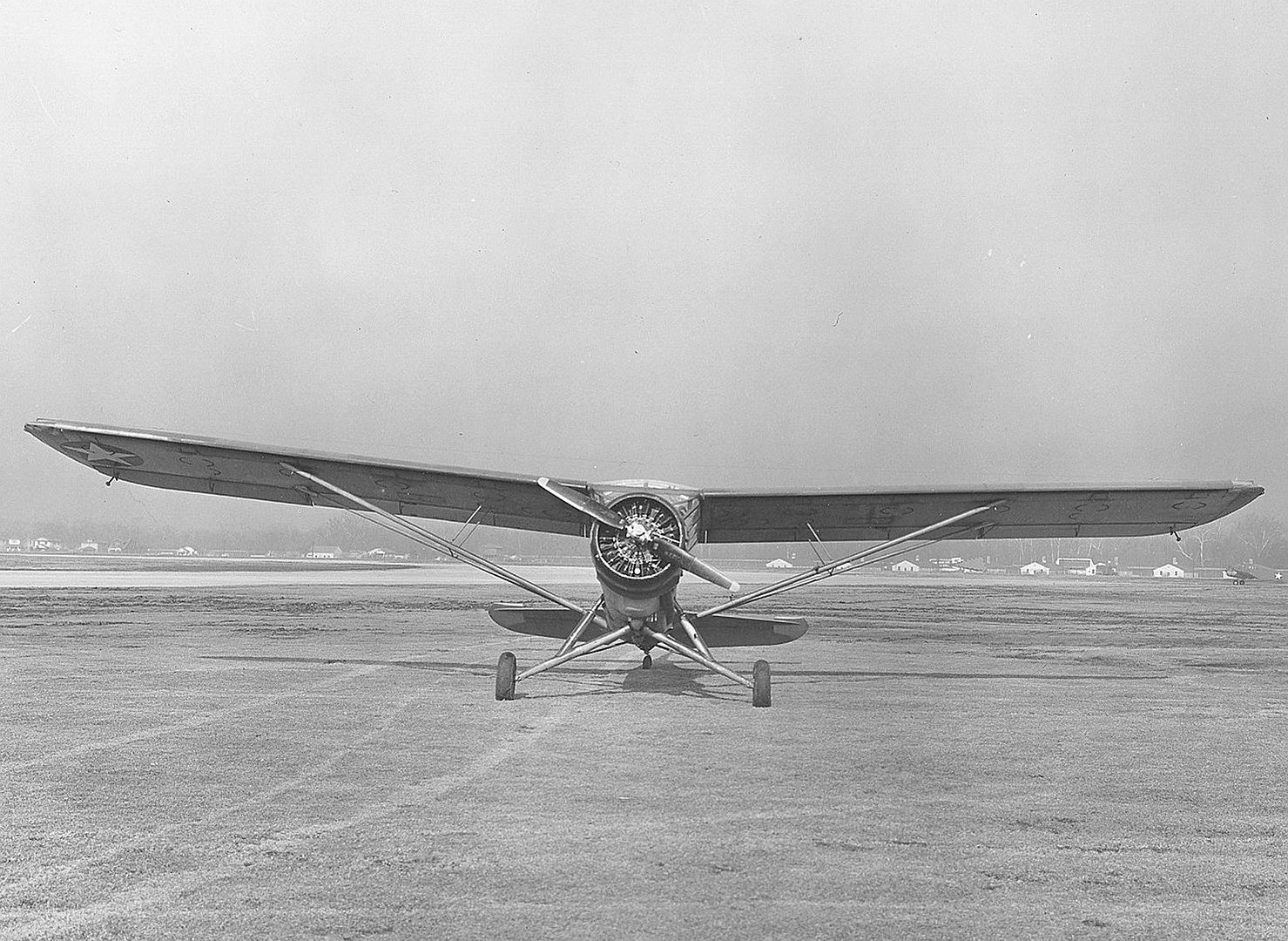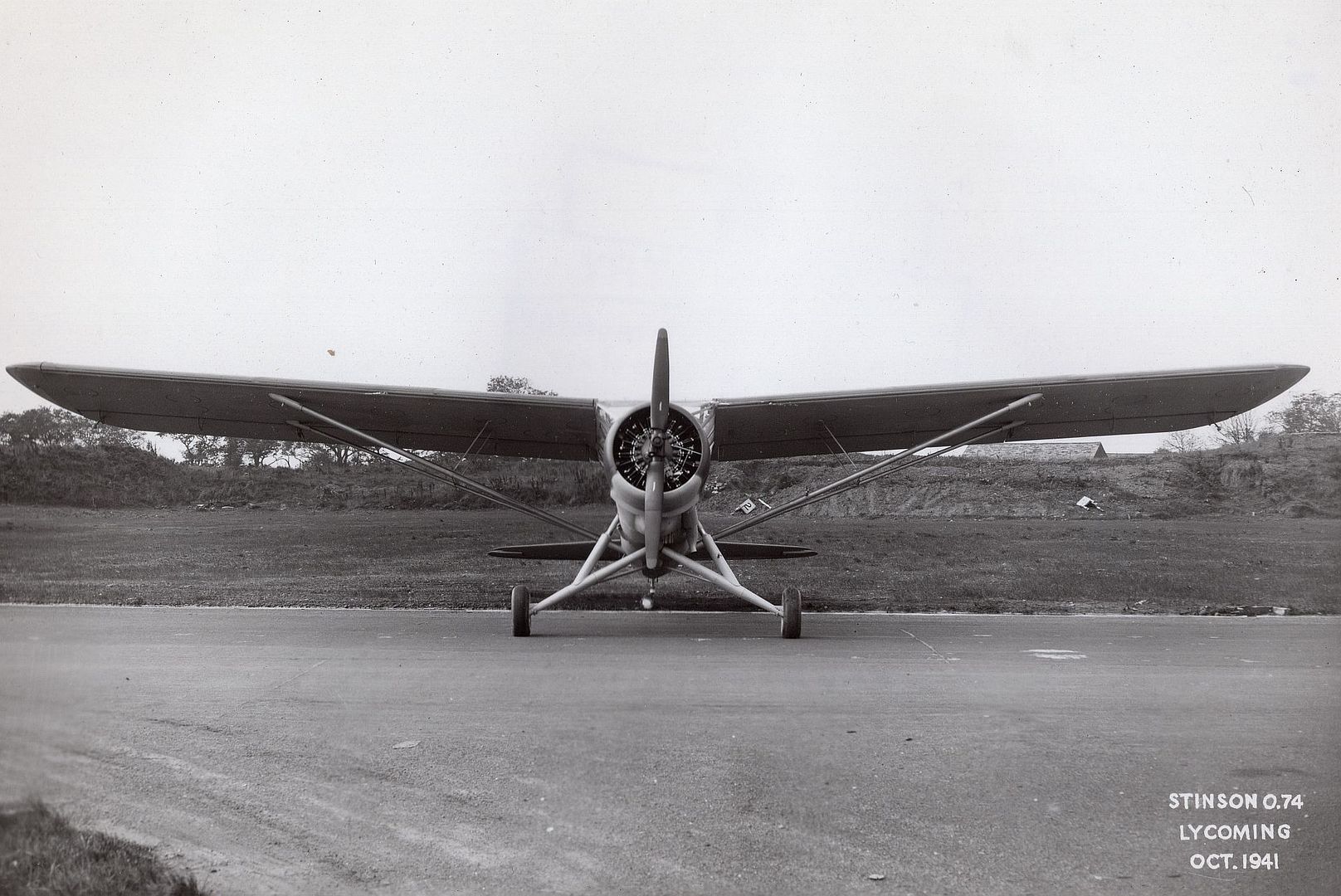Forums
- Forums
- Duggy's Reference Hangar
- USAAF / USN Library
- Stinson L-1 Vigilant
Stinson L-1 Vigilant
Post a reply
- Go to Previous topic
- Go to Next topic
- Go to Welcome
- Go to Introduce Yourself
- Go to General Discussion
- Go to Screenshots, Images and Videos
- Go to Off topic
- Go to Works in Progress
- Go to Skinning Tips / Tutorials
- Go to Skin Requests
- Go to IJAAF Library
- Go to Luftwaffe Library
- Go to RAF Library
- Go to USAAF / USN Library
- Go to Misc Library
- Go to The Ops Room
- Go to Made in Germany
- Go to Campaigns and Missions
- Go to Works in Progress
- Go to Juri's Air-Raid Shelter
- Go to Campaigns and Missions
- Go to Works in Progress
- Go to Skinpacks
- Go to External Projects Discussion
- Go to Books & Resources
-
5 years agoMon Jan 01 2024, 03:08pmDuggy
 Main AdminThe Stinson L-1 Vigilant (company designation Model 74) was a 1940s American light observation aircraft built by the Stinson Aircraft Company at Wayne, Michigan (by November 1940 a division of Vultee Aircraft Corporation). The aircraft was operated by the United States Army Air Corps as the O-49 until 1942.
Main AdminThe Stinson L-1 Vigilant (company designation Model 74) was a 1940s American light observation aircraft built by the Stinson Aircraft Company at Wayne, Michigan (by November 1940 a division of Vultee Aircraft Corporation). The aircraft was operated by the United States Army Air Corps as the O-49 until 1942.
Design and development
The Vigilant was designed in response to a 1938 United States Army Air Corps design competition for a two-seat light observation aircraft. When the German-manufactured Fieseler Storch was demonstrated at the Cleveland Air Races, the Air Corps revised its specifications in an attempt to match the performance of the Storch. Stinson (later a division of Vultee), won the $1.5 million contract over 11 competitors, including the Bellanca YO-50 and Ryan YO-51 Dragonfly.
The Model 74 was a single radial engined high-wing monoplane with trailing-edge high-lift devices for low speed and high lift performance. The prototype aircraft was built with full-span leading-edge automatic slots manufactured by Handley Page, and slotted flaps. The Model V-74 was given the Army designation YO-49 for evaluation, with the first flight by test pilot Al Schramm on 15 July 1940.
The aircraft was built of steel tubing and fabric, with the fuselage forward of the wing enclosed in sheet metal. Control surfaces and the empennage were fabric-covered stainless steel. The Lycoming power plant was hand-cranked inertia starting, and was fitted with a Hamilton Standard constant speed propeller. At least 12 ambulance conversions were fitted with Edo 49-4000 floats (4,000-pound displacement) for amphibious landings and takeoffs.
The Vigilant was capable of stopping in less than its own length, and could maintain stable flight at 31 miles per hour. Anecdotally, the Vigilant was said to be capable of backwards flight in a strong headwind.
Operational history
The Stinson Vigilant was used in diverse roles such as towing training gliders, artillery spotting, liaison, emergency rescue, transporting supplies and special espionage flights. Another contract was later awarded for the O-49A which had a slightly longer fuselage and other equipment changes. In April 1942 the aircraft were redesignated the L-1 and L-1A (liaison). Up to 17 L-1 and 96 L-1A aircraft were allocated to the British Royal Air Force under the Lend-Lease Act, with varying numbers given for aircraft actually delivered (see Variants, below). The RAF designated the aircraft the Vigilant Mk I and Vigilant Mk II respectively. General Harry Crerar, Commander of the First Canadian Army in Europe during World War II, maintained a Vigilant for his personal use.
Aircraft were modified for a variety of roles including as an ambulance aircraft. No further production orders were placed as the aircraft was superseded by procurement of vast numbers of both the militarized Piper J-3 Cub, the L-4 Grasshopper (in addition to Aeronca's and Taylorcraft's similar conversions), and Stinson's own L-5 Sentinel, itself produced in nearly 4,000 examples; were all generically classified as "puddle-jumper" aircraft.
A Vigilant was modified in 1943?1944 for experiments in boundary layer control.
Variants
Stinson Model 74
company designation
O-49 Vigilant
U.S. Army designation for first production batch, 142 built.
L-1 Vigilant
1942 redesignation of O-49.
O-49A Vigilant
Fuselage lengthened 13 in (33 cm) 182 built.
O-49B Vigilant
Conversion to ambulance variant, three or four converted.
L-1A Vigilant
1942 redesignation of O-49A.
L-1B Vigilant
1942 redesignation of O-49B.
L-1C Vigilant
L-1A ambulance variant, 113 converted.
L-1D Vigilant
L-1A training glider tug, 14 to 21 converted.
L-1E Vigilant
L-1 amphibious ambulance variant, seven converted.
L-1F Vigilant
L-1A amphibious ambulance variant, five conversions.
Vigilant Mk I
RAF designation of L-1, 14 to 17 allocated by Lend Lease
Vigilant Mk II
RAF designation of L-1A, 96 allocated, circa 13 to 54 delivered
CQ-2 Vigilant
US Navy conversion of L-1A to target control aircraft, one or more converted



















Specifications (L-1A)
General characteristics
Crew: 3
Length: 34 ft 3 in (10.44 m)
Wingspan: 50 ft 11 in (15.52 m)
Height: 10 ft 2 in (3.10 m)
Wing area: 329 sq ft (30.6 m2)
Empty weight: 2,670 lb (1,211 kg)
Max takeoff weight: 3,400 lb (1,542 kg)
Powerplant: 1 ? Lycoming R-680-9 9-cylinder air-cooled radial piston engine, 295 hp (220 kW)
Propellers: 2-bladed fixed-pitch propeller
Performance
Maximum speed: 122 mph (196 km/h, 106 kn)
Range: 243 mi (391 km, 211 nmi)
Service ceiling: 12,800 ft (3,900 m)
Rate of climb: 408 ft/min (2.07 m/s)
Wing loading: 10.3 lb/sq ft (50 kg/m2)
Power/mass: 0.0867 hp/lb (0.1425 kW/kg)
Post a reply
- Go to Previous topic
- Go to Next topic
- Go to Welcome
- Go to Introduce Yourself
- Go to General Discussion
- Go to Screenshots, Images and Videos
- Go to Off topic
- Go to Works in Progress
- Go to Skinning Tips / Tutorials
- Go to Skin Requests
- Go to IJAAF Library
- Go to Luftwaffe Library
- Go to RAF Library
- Go to USAAF / USN Library
- Go to Misc Library
- Go to The Ops Room
- Go to Made in Germany
- Go to Campaigns and Missions
- Go to Works in Progress
- Go to Juri's Air-Raid Shelter
- Go to Campaigns and Missions
- Go to Works in Progress
- Go to Skinpacks
- Go to External Projects Discussion
- Go to Books & Resources
